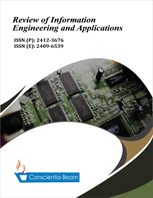Information and Communication Technology in Classroom Situations in Rural and Urban Areas in Zimbabwe: A Comparative Study on the Use of Digital and Projected Media in Teaching and Learning at Six Secondary Schools in Masvingo
DOI:
https://doi.org/10.18488/journal.79/2014.1.2/79.2.77.92Abstract
Information and communication technology have taken centre stage of almost every interaction, communication and learning processes among people of this world. This study is a comparative analysis of the usefulness of modern information and communication technology (ICT) in the transmission and movement of information in the teaching and learning processes at high schools in Zimbabwe. In the contemporary times most projected media are computerized and, thus, may require advanced expertise in operating them. It has been also argued that projected media makes learning real, practical, interactive, and above all, more permanent than other teaching and learning aids. The objectives of this study were to establish forms of projected media in use in urban and rural schools in Zimbabwe; to investigate the extent to which these projected media are really of use in these schools; and to establish challenges faced by these schools in their endeavours in the use of projected media. The central argument in the study is that proper use of projected media leads to efficiency and effectiveness in the teaching and learning processes. Research methods involved both a theoretical review and an empirical study based on case studies, making use of comparative and exploratory approaches. The study established that while urban secondary schools have some forms of contemporary projected media, rural secondary schools do not have most of these projected media; the expertise and zeal to use the projected media is very low in both urban and rural schools; and proper use of projected media leads to efficiency and effectiveness in the teaching and learning processes. Among other recommendations, the study recommends continuous professional development of teachers in the use of projected media; and partnerships with stakeholders so that the school has a wider base for resource mobilisation.

